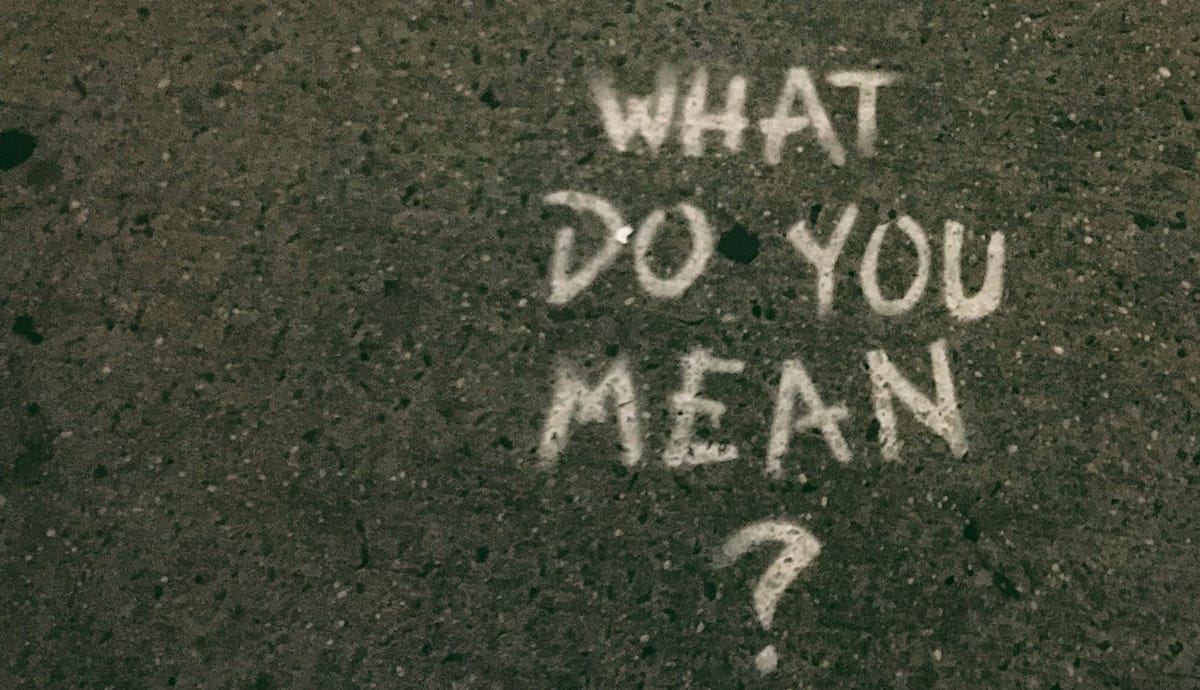The Shifting Sands of Discrimination's Definition
So, how did we get to a place where the highest court in the land looks ready to create precedent for claims of "reverse discrimination?"

The US Supreme Court looks poised to release a decision affirming that a straight woman, here in Ohio, can claim that she experienced discrimination when her government employer promoted a lesbian woman over her. So, how did we get to a place where the highest court in the land looks ready to create precedent for claims of "reverse discrimination?"
My colleague, Lauren Valentino, and I recently published our work examining differences in how Americans define terms like racism, sexism, and classism. We find substantial variation in definitions of discrimination, some that align with the likely ruling of the Supreme Court and many that are in direct conflict. In our paper, we describe the three axes along which divergence can be found: whether the -ism was intentional, whether it was a form of differential treatment or resulted in differential outcomes, and whether it specifically affected a historically less powerful group.
Let's play that out in practice to better understand how and why some will celebrate this forthcoming decision where others will be shocked that anyone could look at this incident and label it discrimination.
Intentionality
We had some respondents who felt that it did not matter whether an action was intended to be hurtful or harmful, valuing the impact of the action more than the intent. In interviews, some of these folks described how difficult it was to ascertain intent, recognizing that all sorts of forms of plausible deniability could be invoked (e.g., "it was just a joke!" or "I didn't realize that was a bad word!") Some also felt that the post-2020 national discourse about racism and the post-Me Too national discourse around sexism meant that ignorance of discrimination was willful at this point.
In a nationally representative survey, we found that older respondents rated examples of intentional discrimination as more racist/sexist/classist than younger respondents, with respondents of all ages rating unintentional examples at around the same level. In examining the role of political affiliation, Republicans had the widest gap between their ratings of intentional and unintentional examples. While the gap for Democrats was smaller, their rating of unintentional examples was higher than the Republican rating of intentional examples. In other words, Democrats considered unintentional discrimination to be more racist/classist/sexist that Republicans consider intentional discrimination to be.
In subsequent analysis, we examined the relationship between the intentionality framework and various sociopolitical attitudes. We found, among those who agreed that racism occurred regardless of intentionality, increased support for the idea that discrimination is a major problem in the US, increased support for media coverage of discrimination, and increased support for anti-discrimination laws.
Unequal Treatment vs Unequal Outcomes
Some participants looked for evidence of discrimination in outcomes. If, for example, fewer women were hired as CEOs than men, that might hint at the existence of sexism. Other participants focused on the existence of unequal treatment as evidence of discrimination. So, for them, programs that are means tested, like the COVID-19 relief checks, were examples of classism.
We found that Republicans were more likely to say discrimination occurred in examples of unequal treatment compared to examples of unequal outcomes. For Democrats, the reverse was true, with respondents more likely to appraise discrimination in cases of unequal outcomes. There was a similar mismatch by gender, with men appraising discrimination more often in cases of unequal treatment and women appraising discrimination more often in cases of unequal outcomes.
When looking at the relationship between these factors and support for public policy, we found that Americans who were more likely to appraise discrimination in cases of unequal outcomes were more likely to agree that discrimination is a major problem, that the media should pay increased attention to issues of discrimination, and that our anti-discrimination laws and affirmative action policies should be strengthened. Those who were more likely to appraise discrimination in cases of unequal treatment? They held opposing views (e.g., discrimination is not a major problem, it receives too much media attention, and our laws and policies should not be strengthened).
Power Differentials
The final point of definitional contention we found in our research focused on the power dynamics at play. For some respondents, the historic power and influence of various groups was the backdrop against which their discrimination appraisals were made. For them, a white person could not claim racism, a man could not claim sexism, and a rich person could not claim classism. Others held a more power symmetric view of the situation, discounting historic power differentials in their appraisals of the scenario.
Republicans endorsed a power symmetric appraisal framework, rating examples similarly regardless of if the target belonged to a historically more powerful group. Democrats strongly applied a power asymmetric framework. In cases where the target was part of a less powerful group, Democrats rated the example far higher than cases with more powerful targets. In general, there were not substantial differences in appraisal by gender, with respondents generally rating examples with less powerful targets higher than those with more powerful targets. Men, however, had the smallest differentiation between the two types of scenarios.
As with the treatment/outcome divergence, those who recognize power asymmetry also endorse policy positions supportive of increased attention to issues of discrimination, stronger enforcement of anti-discrimination laws, and expanded access to affirmative action programs.
So, was it discrimination?
Now that I've walked you through some highlights of our paper, we can return to the case before the Supreme Court. Instead of asking whether this counts as discrimination, I venture that we should ask to whom this might count as discrimination. From my (limited and non-legal!) understanding of the case, the plaintiff is part of a historical stronger group (heterosexual) and argues that she was held to a different performance standard than others in her workplace (e.g., differential treatment). The case notes that her supervisor at the time was gay and that her two colleagues who were promoted over her were also LGBTQ+, alleging some level of intent through a pattern of behavior. So, this case is one of intentional, differential treatment affecting a member of a historically more powerful group.
While all age groups agree that intentional behavior is rated as more racist/sexist/classist, the gap in ratings between intentional and unintentional examples is particularly large for older folks. Republicans weigh unequal treatment more heavily than unequal outcomes in their appraisal process and tend to apply a power symmetric lens while appraising. Men follow similar patterns.
After the decision is released, as the public conversation of the case explodes, keep these patterns in mind. It may help us all understand how we can look at the same facts of the case and reach wildly different conclusions about the presence of discrimination.


